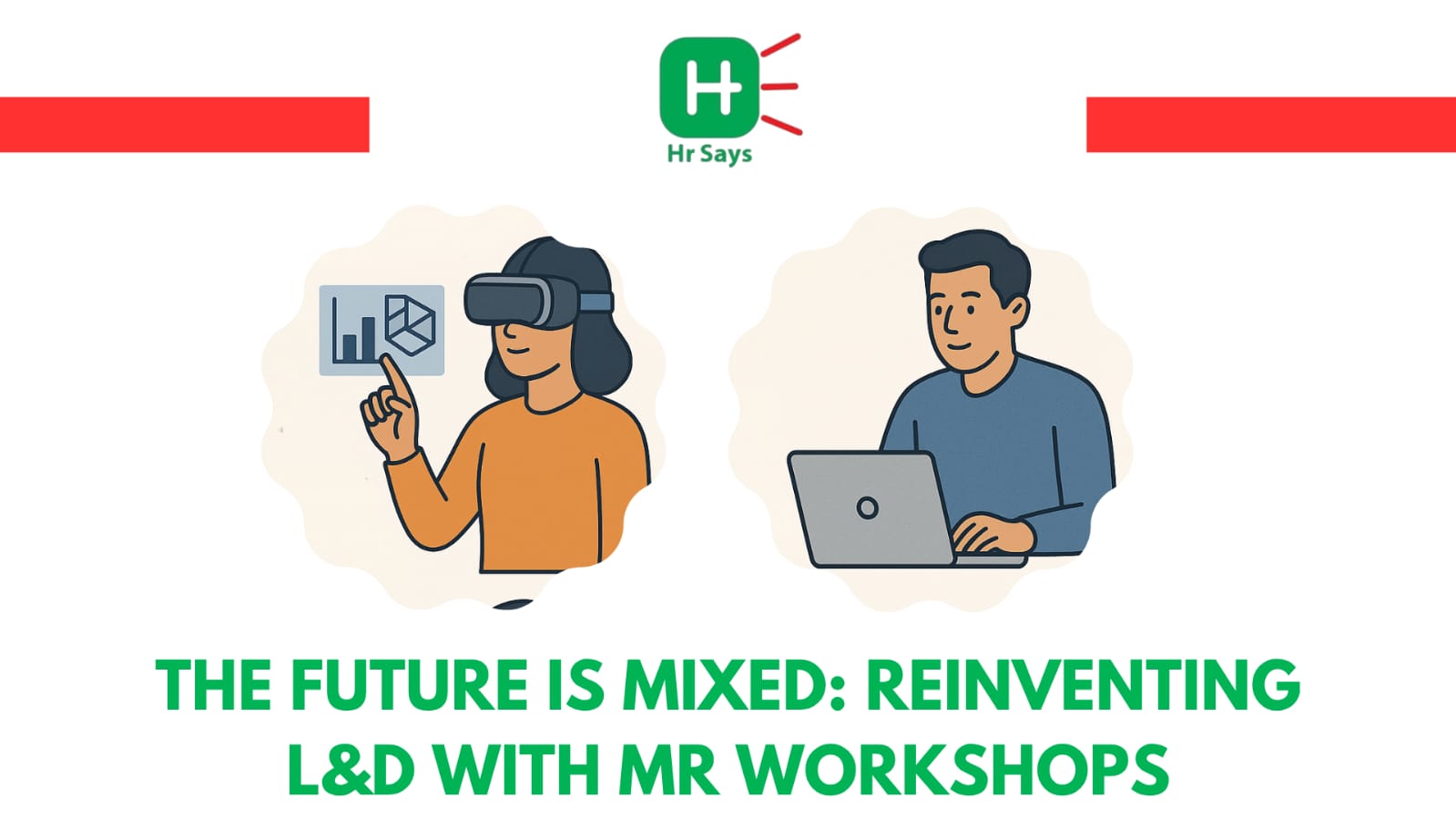What if training could feel less like a lecture and more like real life? That’s where MR walks in. Allowing real time backwards simulation, and fully immersive settings it is not learning, it is experiencing. This is the role of MR in transforming L&D, workshop by workshop.
Knowing MR in L&D
Ok, so let us begin with the fundamentals. Mixed reality is a combination of both Virtual (VR) and Augmented Reality (AR). As compared to VR, which excludes the actual world, or AR, which superimposes it, MR enables actual, virtual objects to communicate in real-time.
In L&D, this means:
● Learners engage with both physical tools and digital overlays.
● Training becomes interactive, rather than observational.
● Complex tasks can be practiced in safe, risk-free environments.
The result? Better retention. Stronger engagement. Faster upskilling.
Why MR Workshops?
MR workshops bring learning into context—literally. They provide real-world environments with layered insights. Learners can touch, move, and respond to situations as they unfold digitally around them.
Some standout advantages include:
● Muscle memory meets cognitive learning: Skills become second nature.
● Safe trial and error: Mistakes teach more when consequences don’t hurt.
● Scalability across roles: From technical skills to soft skills, MR adapts.
A factory worker can walk through a hazardous scenario safely. A new manager can practice conflict resolution in a virtual boardroom. The use cases stretch wide.
The Learner Experience
In MR workshops, learning is no longer passive. People are plunged in virtual situations in which they are compelled to behave, choose, and find solutions in the field.
Engagement That Sticks
Because MR involves the senses, it deepens cognitive involvement. Learners retain more because they do more. This shift from passive to active learning changes everything.
Real-Time Feedback
Unlike traditional sessions, MR systems can give live feedback. Trainees know instantly what went wrong—and why.
Personalized Learning Paths
MR workshops adapt. Whether someone needs extra time or a tougher challenge, the environment shifts accordingly.
Challenges Along the Way
Of course, MR isn’t magic.
● Cost and hardware dependency can be limiting.
● Technical glitches may interrupt flow.
● Change resistance can hold teams back.
But these are growing pains. As MR tools become more affordable and user-friendly, adoption will follow.
What L&D Leaders Should Do Now
For those leading L&D initiatives, the moment calls for both curiosity and caution. Consider this your gentle nudge.
● Explore MR use cases in your industry.
● Start with pilot programs—small, controlled experiments.
● Upskill internal teams to manage the tech side.
● Gather feedback rigorously.
Not everything needs to change overnight. But something needs to start.
The Road Ahead
MR is not here to replace traditional learning. It's here to elevate it. Human connection still matters. Mentors, trainers, feedback loops—they remain vital. But MR adds a new dimension. A sharper edge.
The future of L&D won’t just be taught. It’ll be lived.

 Mixed Reality (MR) is changing how we learn—quietly but surely. In Learning & Development (L&D), it’s more than a buzzword. It’s a bridge between theory and practice, merging physical presence with digital possibilities.
Mixed Reality (MR) is changing how we learn—quietly but surely. In Learning & Development (L&D), it’s more than a buzzword. It’s a bridge between theory and practice, merging physical presence with digital possibilities.












.jpeg)












.jpeg)